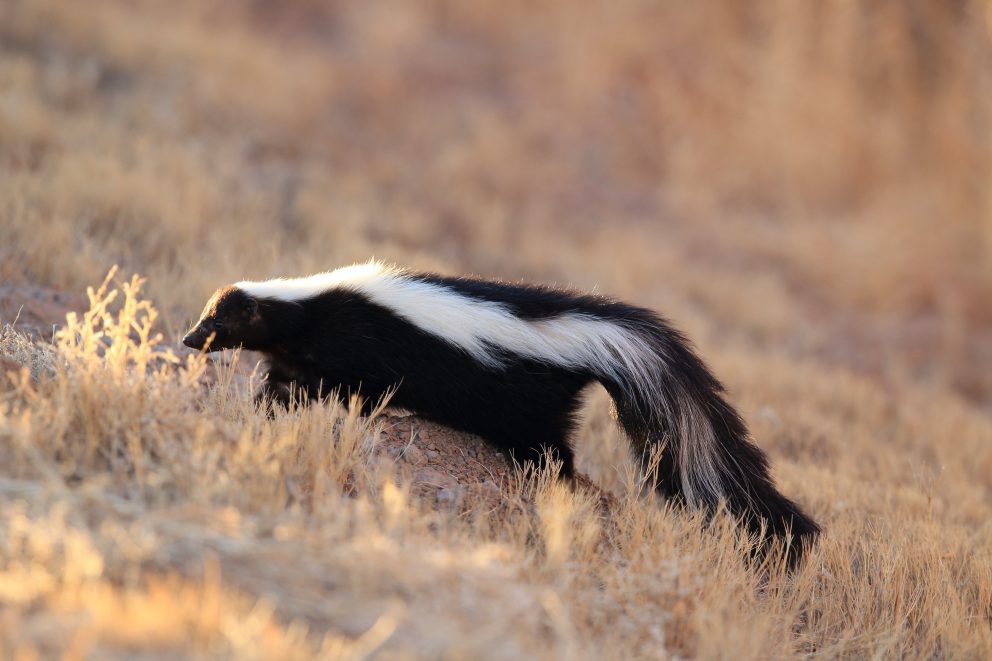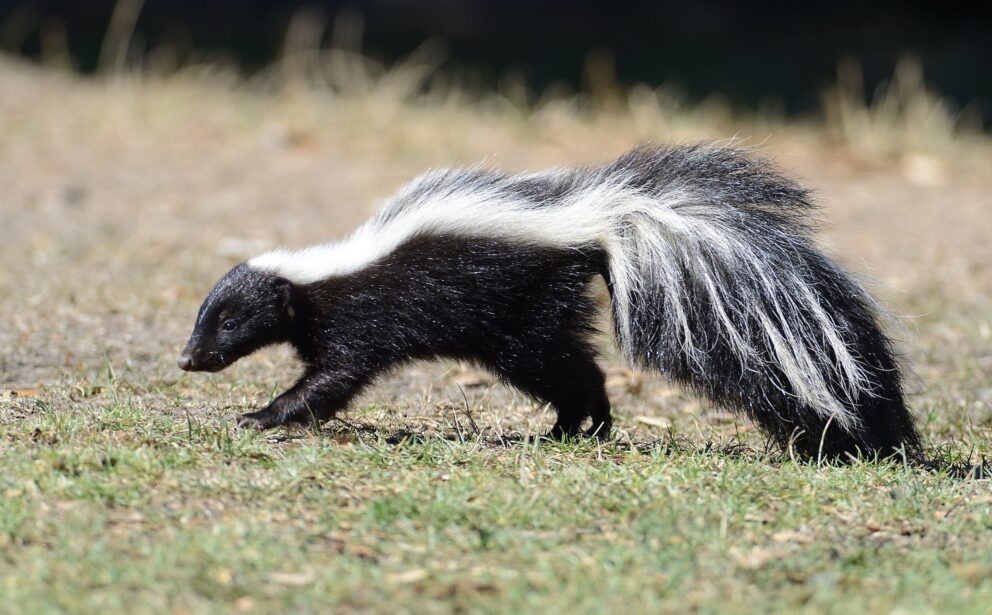- SCIENTIFIC NAME
- Mephitis mephitis
- CLASSIFICATION
- Mammal
- LIFE SPAN
- 1-7 Years
- SIZE
- 18-32” | 2-14lbs
- STATE CONSERVATION STATUS
-
- Unprotected
- FEDERAL CONSERVATION STATUS
- Least Concern
- GAME STATUS
- Non-Game
- GAME TYPE
- None
- Washoe
- Humboldt
- Pershing
- Churchill
- Mineral
- Lyon
- Douglas
- Carson City
- Storey
- Elko
- Lander
- Eureka
- White Pine
- Esmeralda
- Nye
- Lincoln
- Clark
Habitat & Range
A Striped Skunk will make a home in abandoned burrows, hollowed trees or logs, or under brush that offers cover. They prefer areas that are near water sources, but have been seen in the drier desert areas of southern Nevada.
- Agricultural Lands
- Desert Playas
- Developed Landscapes
Threats
- Disease
Natural History
These omnivores are opportunistic feeders and have an adaptable diet based on food availability. However, 80-90% of its diet is animal-based; typically birds, lizards, rodents, even eggs and insects. Skunks are polygamous and will mate with more than once every breeding season with multiple partners. Breeding season typically occurs from February to April.
Fun Facts
Their odiferous and intense spray is an important defense mechanism which encourages most mammals to avoid the Skunk. However, large birds of prey, like great horned owls and eagles, are unaffected by the smell and will prey on the Striped Skunk.














